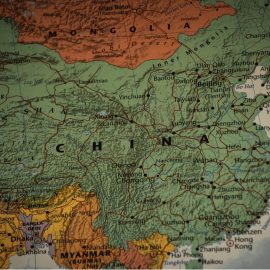

This article is an excerpt from the Shortform summary of "Understanding Michael Porter" by Joan Magretta. Shortform has the world's best summaries of books you should be reading.
Like this article? Sign up for a free trial here .
What is the bargaining power of suppliers? Do you need it to form a business strategy?
Your suppliers consist of any providers with direct input into your product, including distribution channels, marketing, and labor. How much power they have affects your competitive position and your business expenses. Learn more about how to understand the strength of your suppliers.
The Five Forces and The Bargaining Power of Suppliers
Why are some industries consistently more profitable than others? What makes information technology so stereotypically profitable, while airlines are a cutthroat, low-margin grind? Does it have anything to do with the bargaining power of suppliers?
When trying to find an answer, it’s tempting to focus on the competition between rivals. But the bigger is picture than this. Rivals aren’t just competing with each other. They’re also engaged in a struggle for profits with all the other players in the ecosystem – like customers, who would always like to pay less and get more, and are eager to substitute a product for a better alternative. In this ecosystem is Porter’s five forces supplier power.
To see an industry holistically, consider Porter’s famous Five Forces, especially Porter’s five forcers supplier power. The Five Forces that matter in any industry are:
- Buyers
- Suppliers
- Substitutes
- Incumbents
- New entrants
The more powerful the force, the more pressure it will put on decreasing prices or increasing costs, or both.
The bargaining power of suppliers can affect aspects of your business operations and profits.
Note that every adjacent industry has its own Five Forces, so that their relative disadvantage can be your gain (e.g. a fragmented supplier group is bad for suppliers but good for you).
Force 2: Suppliers
What is the bargaining power of suppliers? Why do suppliers have bargaining power? Supplier bargaining power is the following:
What this is:
- Providers of any direct input into your product
- Distribution channels, marketing
- Labor
What it does:
- Increases costs, since powerful suppliers can demand higher prices or else
Supplier bargaining scenarios in your advantage:
- Your size relative to a supplier (higher % of supplier’s sales coming from you)
- (Shortform example: Groupon aggregated buyers to exert pricing power over small restaurants, yielding tremendous short-term success. Unfortunately, over time restaurants realized this was unprofitable and dropped out.)
- (Shortform example: the Internet brought marginal distribution cost to zero, allowing aggregators like Google and Facebook to amass consumer attention to exert control over information suppliers like media companies, eventually commoditizing them.)
- Low switching costs for you to change to alternate suppliers
- You can credibly threaten to vertically integrate into the supplier’s industry.
- Coca-Cola can threaten to produce its own cans.
- (Shortform example: Google produces its own phones to lower bargaining power of manufacturers who use Android.)
Porter’s five forces supplier power explains why suppliers may have influence over your business.
Supplier bargaining scenarios in your disadvantage:
- Labor unions
- Unions consolidate labor into a forceful bloc, wielding large negotiating power with employers.
- In the airline industry, unions restricted who could be employed to wave planes back from gate, increasing costs for airports and airlines.
- When the industry needs suppliers more than suppliers need the industry
- In other words: when suppliers have many alternative buyers in other industries, or when your industry is a small fraction of sales for your suppliers.
- High switching costs for you to change suppliers
- The PC industry has been beholden to Microsoft, because the switching cost of its customers to another operating system is huge.
The bargaining power of suppliers is inconsistent, and it’s important that your business strategy adjusts to it. You can learn how to use the bargaining power of suppliers to incur fewer costs, or shorten your supply chain.

———End of Preview———
Like what you just read? Read the rest of the world's best summary of Joan Magretta's "Understanding Michael Porter" at Shortform .
Here's what you'll find in our full Understanding Michael Porter summary :
- How Porter's famous Five Forces help you analyze every industry
- How IKEA, Southwest Airlines, and Zara have ironclad, defensible strategies
- Why the best companies reject opportunities to focus on what they know






